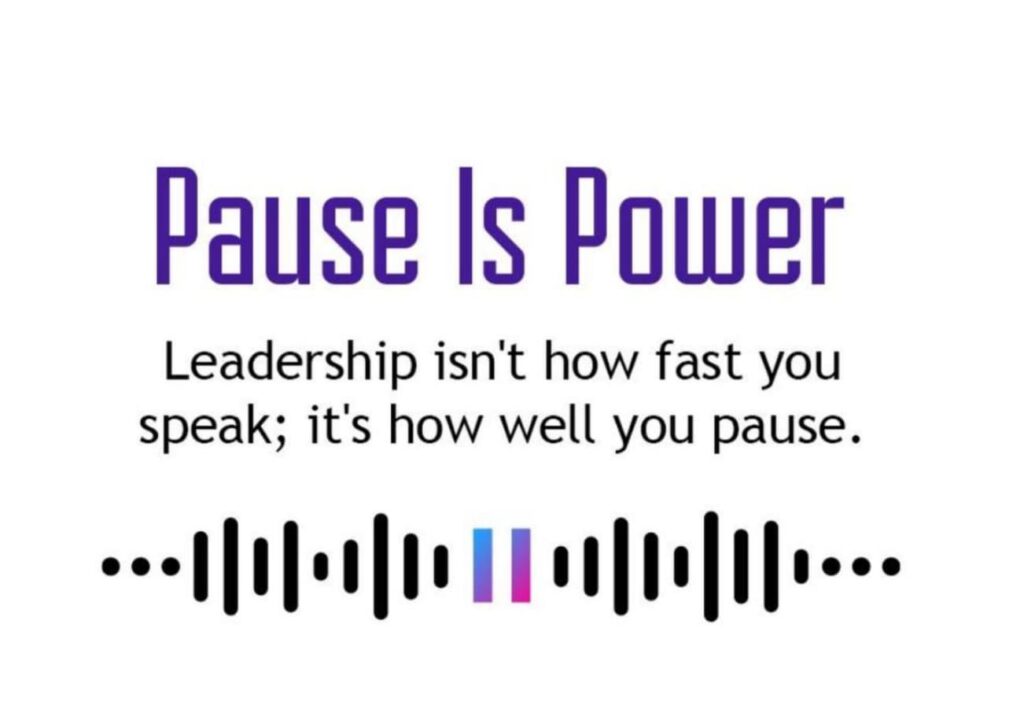We’ve all been there—the moment after we’ve said something too fast, too sharp, or too soon. You realize it instantly: I should’ve paused.
That one second could’ve changed the direction of the conversation, the tone of the room, or the trust in the relationship.
But in high-stakes moments, the meetings that matter, the tensions that rise, we don’t pause. Not because we don’t want to. But because we can’t access the pause when we need it most.

Techniques are Useless Without the Right Mindset
Before we talk about how to pause, we need to talk about why we don’t. And more importantly, what we believe about those moments.
If you enter a high-stakes situation thinking that speed, sharpness, or intuition are your biggest strengths, then none of the tools in the world will help. Because when the pressure hits, your brain will follow your beliefs.
The truth is: in critical moments, intuition can become dangerous. Fast reactions aren’t always wise ones. We must walk into important conversations carrying a very different belief:
Calm, patience, and control are always our allies. Anything that pulls us away from them—urgency, ego, emotion—is not our strength. It’s our enemy.
Without this mindset, your brain runs on autopilot, defaulting to primitive patterns and emotional shortcuts. With this mindset, you activate the executive brain—the one designed for leadership. And only then do strategies begin to work.
5 Reasons We Fail to Pause
Even with the right mindset, pausing isn’t easy. These five forces work against us, neurologically, emotionally, and socially.
- Fear of Silence: Silence can feel like weakness. In group settings, many leaders speak just to stay in control of the moment.
- Need to Appear Decisive: Fast decisions look like confidence. But often, they’re just reflexes with a polished surface.
- Amygdala Hijack: Under pressure, the emotional brain hijacks your control. You react without conscious thought, and regret often follows.
- Lack of Metacognitive Awareness: You can’t pause if you don’t notice you’re reacting. Without awareness, autopilot takes the wheel.
- Cognitive Overload: When your brain is juggling too much, it seeks quick relief. Often, that means saying something, anything, to move forward.
How to Reclaim the Pause
These techniques only work if you believe in the value of control over the illusion of speed. If that belief is in place, these practical ways make the pause accessible when it matters:
- Use Pre-Planned Phrases When You Don’t Know What to Say
In high-pressure moments, silence feels risky. That’s when people blurt out thoughts they later regret. Instead, have two or three default sentences ready:
“That’s worth thinking about.”
“Let me take a second before I answer that.”
“I’d like to reflect and get back to you.”
These aren’t delays — they’re bridges to clarity. - Ask a Cortex-Activating Question Mid-Reaction
When emotion surges, interrupt it with one internal question:- Would I want to be associated with what I’m about to do or say?
- Would I teach this behavior to a child?
These questions re-engage your executive functions and weaken impulsive circuits.
- Set a Victory Goal Before the Meeting
Before any high-stakes conversation, silently tell yourself:
“My win today is not in making a point. It’s in pausing at least once — with full control.”
This primes your mindset for presence over performance. - Label the Trigger
When urgency or pressure kicks in, name it:
“This is a trigger.”
“This is fast energy.”
Labeling a mental state moves you from being inside the reaction to observing it, and that’s where power begins. - Normalize the Pause in Your Environment
Use intentional silence in meetings. Don’t rush to fill every space. Over time, your team learns: this isn’t hesitation, it’s leadership. They start to mirror it. And you’re no longer fighting the energy alone.
Closing Thought
The pause isn’t empty space. It’s executive space. It’s where clarity is made, trust is built, and leadership becomes visible.
If you walk into the moment without the right mindset, your brain will default to speed. But if you believe that patience is power — that calm is intelligence — then the pause won’t feel like a risk anymore.
It’ll feel like what it really is: A signal that you’re the one leading the room — not your emotions.

